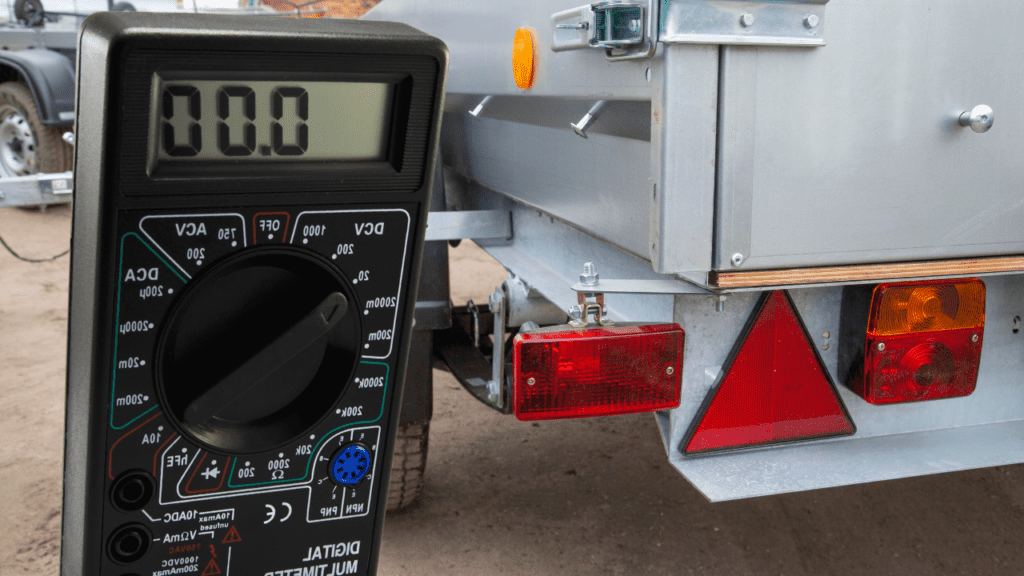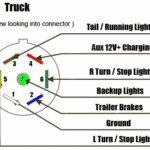How to Test Trailer Lights with a Multimeter
Lights are components in your trailer that you don’t take for granted. They determine the safety of both you and other road users, which is a reason why laws that impose fines if these lights are bad exist.
Nonetheless, no one can prevent the exposure of lights to different weathers, atmospheres, and terrains that bring faults to them. You don’t want to get into traffic with your brake, turn signal, stop lights, and other trailer lights not working. How do you avoid this situation?
This article presents you with information about diagnosing your trailer lights, including how you could simply use a multimeter to point out issues. Let’s get right in.
Diagnosing A Problem With Your Trailer Lights
There are two ways to diagnose the source of your problem with trailer lights. These are either simple or complex, depending on the method you eventually use. The two methods include
- Checking for burned out lights
- Bypassing the tow wiring system/trailer connector plugs.
Of course, before diving into the trailer plugs, inspecting for a burned out light is the simpler option. You simply replace the lights with new ones and see if they come on. If the new lights don’t work, you move to the next diagnosis step.
Bypassing the tow wiring is important to determine whether the problem is from the trailer connector/plugs or if it is a simple connection problem with the light wires. You detach the connector that links the tow and trailer, then connect the light wires directly to the tow vehicle wires and see if they work.
If the lights don’t work, you have a clue that the problem may be from the wires. This video helps to paint a clearer picture.
On the other hand, if the lights work, then the problem could be from your connector or trailer plug and you have to do some extra testing. To do this, you need the following tools.
- A multimeter
- A test light

How To Test Trailer Lights With A Multimeter
To test your trailer lights, you disconnect the wiring system and use your multimeter probes to check for a ground connection problem at the connector or a problem with the trailer plugs.
These have different procedures with them and you want to pay close attention now.
Your trailer wiring system involves hooking up your “male” trailer plugs into the “female” connectors. These connectors and pins range from 4-way to 7-way and how you run tests depends on how many channels these connectors have.
The following steps will be in the context of 4-way connectors. You can refer to our FAQ section for steps on testing 7-way connectors.
Testing Connectors
Testing connectors involves checking for grounding issues and problems in your connector pin and holes.
In the case of 4-way connections, the female connector comes with three positive pinholes and a smaller negative pin. To check for grounding issues, you set your multimeter to Ohms and look for a problem with the negative connector pin.
Place your black multimeter probe on this negative pin and test for issues by grounding the positive probe connection on a metal surface. You look for a reading of 0.3 Ohms.
If this works fine, you move to inspect your positive connector holes.
To check the connector holes, you place your black probe on the negative pin and put your red probe into the other positive pinholes. While doing this for each individual hole, you check for a reading of 3 Ohms. Here is a video that shows exactly what to do.
Once you confirm that these are working, you move to your trailer plugs.
Testing The Trailer Plugs
While testing the trailer plugs, you want to test the ground hole against the positive pins. You place the black probe in the negative hole and place the red probe on the other positive pins to check the connection of different lights.
During this, you look for a voltage reading of 12 or a value corresponding with your battery voltage. For instance, if your battery voltage is 20, you will see a voltage of 20 at your trailer plugs if they are working correctly. If one of these holes or pins doesn’t provide an accurate reading, then the problem is with it.
Checking With Test Lights
Alternatively, you can use test bulbs to inspect your trailer lights and see if they are working.
Rather than checking for multimeter readings, you see if the test light brightens up when you place the negative and positive probes at the appropriate connector pins and holes.
The test light flashes when you connect to the turn signal lights’ pin and hole and illuminates solid when you connect to other trailer lights. Nonetheless, a multimeter allows for a more accurate inspection.
Frequently Asked Questions
How Do You Test A 7 Pin Trailer Plug With A Multimeter?

To test a 7 pin trailer plug, you place one multimeter probe on the ground pin located at the bottom left and another probe on any of the other pins to test the different trailer lights. This diagram shows the relationship between pins and lights.
How Do You Test A Four Pin Trailer Plug With A Multimeter?
To test a four pin trailer plug, you set the multimeter to DC volts, place the black probe at the bottom neutral plug, and use the red probe at the other plugs to test for different lights.
How Do You Diagnose Trailer Lights?
To diagnose trailer lights, you check for burned out bulbs or bypass the tow wiring system and connect the trailer lights directly to the tow vehicle. If none of these work, then there could be a problem with your trailer plugs and connectors.
How Do I Check The Power Of My Trailer Lights?
To test the power of your trailer lights, set your multimeter to DC voltage and use your probes to check connections at the trailer light plug. If you use a 12-volt battery, the multimeter reads about 12 volts at the plug.
Conclusion
No matter how complex these may seem, testing your trailer lights is a simple process if you pay proper attention to the steps mentioned above. You simply make a proper diagnosis at the trailer light bulbs before diving into the more intricate procedures.
Remember that the diagrams and light connections differ based on how many channels your wiring system has.
